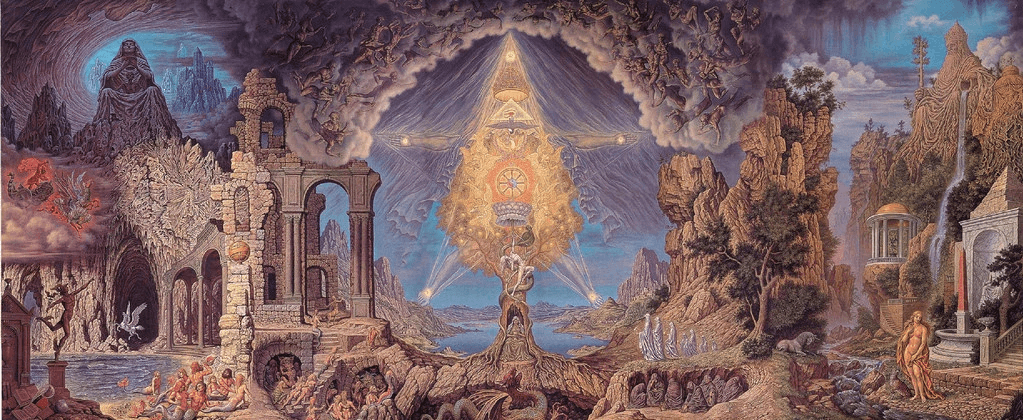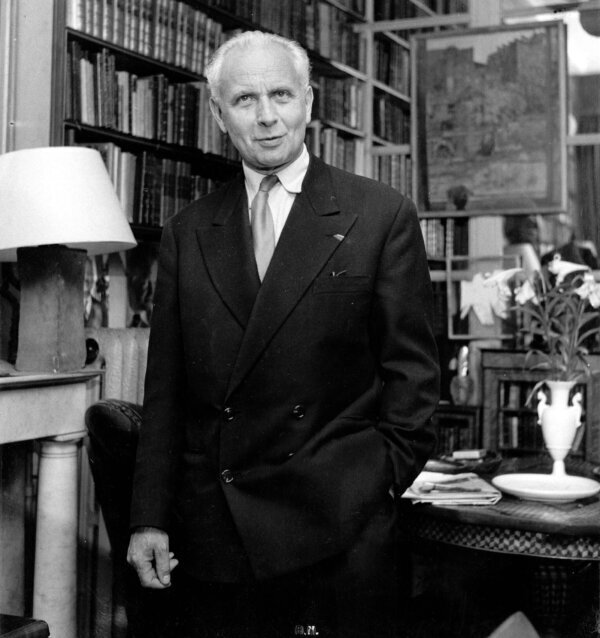Oedipus Rex in René Girard’s Violence and the Sacred
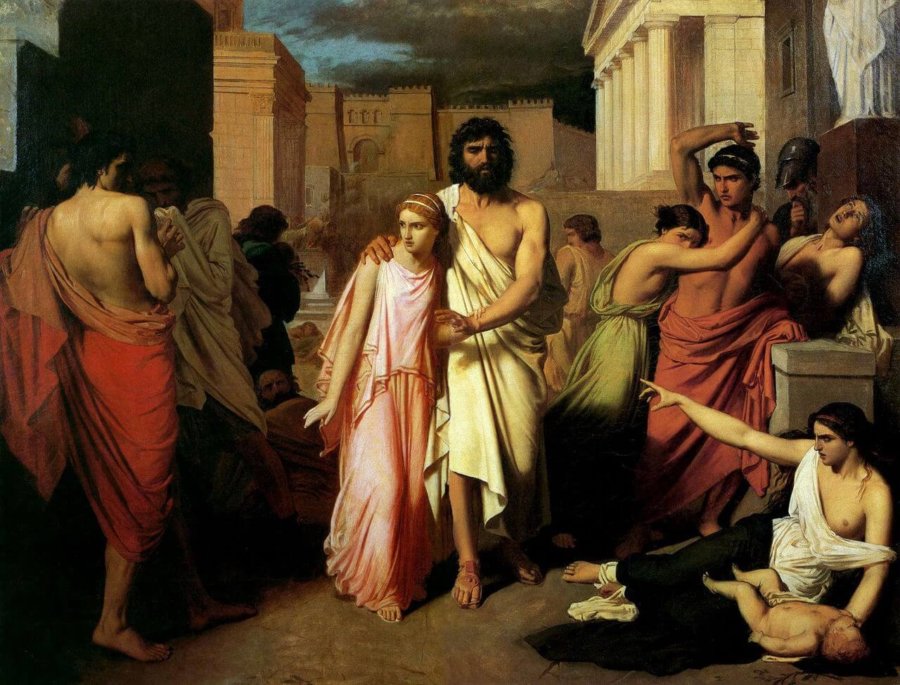
Sigmund Freud’s concept of the Oedipus complex has entered popular consciousness. It names the tendency of boys to become romantically infatuated with their mothers, and girls with their fathers, then called the Electra complex. The notion is scandalous but the phrase provides a certain scientific sounding emotional distance while also connoting messy depths of neuroticism. Incest and cannibalism are so taboo in most societies that in lists of things not to do, they are frequently omitted, so excluded from polite society, that most people forget they even exist most of the time. Classes in ethics will often mention abortion or euthanasia, but never even mention sleeping with your relatives, or eating people. That is a sign of a powerful taboo – so strong that the prohibited activity gets excluded from awareness.
A significant portion of René Girard’s book Violence and the Sacred is devoted to a critique of Freud. The Oedipus complex is named after events in Oedipus Rex, Oedipus the King, by Sophocles. When Oedipus is born an oracle tells his father King Laius that his son will grow up to kill him. Laius pins the boy’s ankles together and orders his mother Jocasta to kill him. Instead, he is left exposed on a mountainside, discovered and brought up by a shepherd. The Oracle at Delphi later tells Oedipus that he is destined to kill his father and marry his mother; something he desperately wants to avoid. Believing Polybus and Merope are his parents, Oedipus leaves Corinth for Thebes to get away from them. On the way he argues with an old man and his two servants about whose chariot has the right of way. When the old man tries to strike him with his scepter, Oedipus throws him down from his chariot, killing King Laius his father without knowing his identity. Thebes is experiencing social disruption, a key fact, when Oedipus arrives. A Sphinx is killing and eating Thebans who could not answer her riddle, terrorizing the city. This has overtones of the other rarely mentioned taboo, cannibalism, because the Sphinx is very human-like in her ability to ask and understand riddles. Oedipus solves it and as a reward Oedipus is offered the kingship of Thebes and the hand of the queen, Jocasta. Later, Thebes is ravaged by a plague, and Oedipus sends Creon, Jocasta’s brother, to the Oracle at Delphi to find out how it can be stopped. The Oracle says that the city is religiously polluted by King Laius’ murderer not being punished. Oedipus discovers Jocasta is his mother later in the story while interviewing a witness to uncover who might have killed his father. The witness is also the shepherd who was given Oedipus as a baby and knows his true identity. Jocasta twigs first and tries, unsuccessfully, to get him to curtail the interview. She hangs herself and Oedipus blinds himself in remorse.
Girard points out the major deficiencies of Freud’s theory in Violence and the Sacred. One is that, having identified the complex, Freud has nothing to say about why a boy might want to sleep with his mother, which is obviously a key question. Girard’s other main criticism is that Freud’s analysis of the boy’s suppression of this incestuous desire makes no psychological sense because it would require a level of foresight that no child would have. According to Freud, the young boy desires to marry his mother, but then realizes that such a desire will set up a terrible and possibly murderous rivalry with his own father many years down the line, when the boy becomes of marriageable age. The unbelievably prescient five-year old boy, let us say, promptly suppresses this incestuous desire. The question then arises, if this desire is suppressed, but not entirely extinguished, where does it reside? The answer Freud gave is in the unconscious. Girard comments that Freud invented the concept of the unconscious out of desperation. If the desire of the boy to marry his mother simply vanished, then it would be safe to forget about it and it would play no role in his future feelings and behavior. But the Oedipus complex exists because this desire can manifest itself in interactions with the mother and attitude towards her, and in hatred of the father. Rather than discovering the unconscious, Freud simply invents it to plug a hole in his account.
Girard offers an alternative explanation that makes much more sense and avoids the idea of suppressed desires, and thus the unconscious. It begins with the observation that human beings are immensely mimetic. Our capacity to learn is largely based on the ability to model ourselves on the boat builder, the mathematics teacher, the wood planer, the flute player, the scuba diver, the man about town, the homemaker, etc., and, with enough time and effort become proficient at those things ourselves. The first and primary role models that children have are their own parents, and especially the parent of the same sex. The boy aspires to grow up to be big and strong like his father. He will get a job like Dad. Drive a car, graduate college, throw a baseball, tell jokes, read books, mow the lawn, entertain friends, watch TV, like Dad. The boy is actively encouraged to be like his father and to mirror his accomplishments. The logic of this implies that the boy will also grow up to marry Mom, like his father did. If the boy voices this expectation, he is immediately contradicted, much to his confusion. He must get his own girlfriend. Is he not good enough for Mom?
So, in Girard’s analysis, the Oedipus complex is no great mystery. The desire to marry Mom is just part and parcel of the boy’s general tendency to take his father as his life model. The fact that incest is prohibited points to real tendencies. There is no need for a prohibition and taboo for something no one wants to do. No one wants to lick a sidewalk with broken glass embedded in it, consequently there is no taboo about doing that, but enough children want to be romantically involved with their parents to make it necessary to prohibit it.
The greatest novelists were well-aware of the role of mimesis in human life. Don Quixote is a story of a man driven mad through imitation of stories of knights errant. Madam Bovary ruins her life by imitating bad romance novels. Julian Sorel in The Red and the Black becomes a monster of hypocrisy and mistreatment of people by imitating Napoleon and aspiring to the rank of his social superiors. Raskolnikov in Crime and Punishment has the same hero with even worse consequences. For most people, the role of mimesis remains somewhat hidden because they think that originality is desirable. Prestige is associated with models and originators, rather than those who merely copy. The fact that Einstein and Beethoven, wild-haired geniuses both, were the beneficiaries of long traditions and accumulated knowledge, is seen as diminishing them. The older brother is the admired hero. The little brother who copies him is a sad wannabe. The older brother had his own models, of course. The ubiquity of mimesis in human life offends our vanity and so we tend to be loath to acknowledge it.
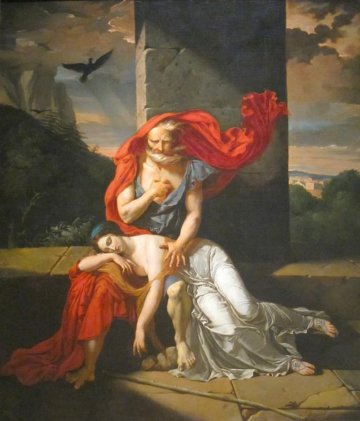
Girard comments that very very few adults realize that imitation is the source of rivalry, specifically when we imitate each other’s desires. At most, people, if they think about it, are likely to say something like “we are naturally competitive,” without identifying why this might be so. It is completely unrealistic that a five-year old child will realize that if his romantic affection for his mother persists and he acts on this desire to marry Mom that he will become his father’s rival and enemy. Perhaps, the boy might even fear that his father might anticipate this course of events and kill him while he is still easy to eliminate?
This foresight is not remotely plausible, and without it, there is no need to postulate the existence of the unconscious as Freud conceived it – the repository of repressed desires. We know now, in fact, that things we are horrified by and that scare us do not get repressed. Traumatizing events, on the contrary, have a tendency to make us highly conscious of them. Vietnam veterans suffering from PTSD cannot stop thinking about what happened to them, even at night when the events are likely to appear in their nightmares. The fiction of repressed desires and memories was responsible for the idea that young people suffering from anxiety and depression were the victims of sexual assault from their parents. The evidence for the assault? Precisely those vague feelings of generalized anxiety and depression which perhaps the majority of people suffer from periodically. The malleability of memory is well-known. Many psychologists persuaded their clients that these hidden “memories” must be the cause of their malaise. This happened to a friend’s wife who became convinced by a psychologist that some shadowy figure had regularly been entering her room when she was little and was then pushed to identify it as her father, although she never did actually remember anything specific. This had such a negative effect on her psychological well-being that the couple divorced. Many grandfathers in the 1990s when this craziness occurred were forbidden to spend time with their grandchildren to the later regret of the mothers when they realized that the idea of repressed memories was false and that they and their psychologists had gotten mixed up in mass hysteria, largely because of this revival of Freud’s ideas.
Oedipus: the Archetypal Scapegoat
The story of Oedipus Rex has its origins in the phenomenon of scapegoating. The archetypal scapegoat is accused of causing social chaos single-handedly. Since this is impossible for any mere mortal, the scapegoat is always innocent of what he is accused. Only a god or a magician could destroy social structures en masse. Plagues, floods, invasions, famines, political division, on the other hand, are perfectly capable of doing this. So, the scapegoat is accused of doing the impossible. What criminal dastardly act could account for the destruction? Clearly, saying “And then he pulled out his magic wand,” or “Then he unleashed his lightning bolt,” just sound stupid. Since claiming something patently ludicrous would only expose the injustice of the accusations, we see in Greek myth naïve charges of the worst crimes they could think of, that are also achievable by a single person; the most taboo and prohibited acts that only a monster would do. These include incest, cannibalism, like the Sphinx, or Polyphemus the cyclops in The Odyssey, patricide, matricide, and killing your children. Oedipus is accused of two of these. The trouble is, heinous as these charges are, they do not cause widespread conflict. The disgusting crimes of Geoffrey Dahmer that included rape, necrophilia, and cannibalism, affected only his victims and their families. So, the scapegoaters need to introduce additional religious forces, the Fates, the gods, religious pollution, etc., to explain how the murder of King Laius, for example, has any connection with a plague in Thebes. A lot of religion involves deifying scapegoats and attributing to them supernatural powers.
Another major sign that Oedipus is a scapegoat is that Oedipus means “swollen foot.” He is supposed to have sore feet and thus to walk with a limp because of his ankles being pinned by his father. Physical handicaps are by their nature highly noticeable and they set the potential scapegoat victim apart from the crowd, a necessary prelude to immolation. Limping tends to elicit a strong instinctual aversion in people. Not to bully the handicapped often has to be actively promoted to overcome this desire to reject and ostracize the physically benighted. When the lions, or other predators, come to eat the sickest, youngest, and oldest, it is not a good idea to be standing right next to them. Something like this seems to account for the desire to avoid those who limp.
Human sacrifice is ritualized scapegoating. The murder of the scapegoat unites the community in shared hatred and bloodlust, but this happens accidentally. Human sacrifice attempts to achieve the same effect, but on purpose. The Greeks would have a pharmakon; a collection of sacrificial victims who would include prisoners of war, slaves, foreigners, and the physically and mentally handicapped. Selecting from this group of victims minimized the chance of retaliation by families. Notice the medicinal curative connotations of pharmakon in English.
Myths are sacrificial and take the point of view of the mob, never the victim. Oedipus Rex fits the bill perfectly.
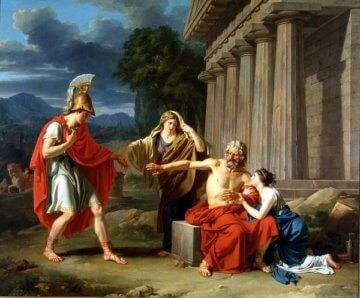
Every Greek hero started out life as a scapegoat. The murder of the scapegoat generates a temporary peace which is later credited to the scapegoat who, it is later claimed, willingly gave his life to preserve the group. Even Oedipus gets partially rehabilitated in Oedipus at Colonus. His semi-deification is implied when near the end Oedipus disappears in a blinding flash.
When the messenger turned back to look at the spot where Oedipus last stood, he says, “We couldn’t see the man—he was gone—nowhere! And the king, alone, shielding his eyes, both hands spread out against his face as if some terrible wonder flashed before his eyes and he, he could not bear to look.”
The dual aspect of the scapegoat can be found in Oedipus Rex. Between killing his father and marrying his mother, Oedipus saves Thebes from the Sphinx. He is already the peace bringer, the benefactor of the mob, as well as the arch villain, all in one story. In some sense each scapegoat/savior is homologous to the next, fulfilling the same function.
Mythic heroes denote murdered real-life scapegoats. Myth reveals the evil of the mob lead by the false accuser. Girard knows that his contention that myths have a basis in historical reality will scandalize many. But, no reasonable person can deny the ever-present human tendency to scapegoat, and the scapegoat dynamic offers the best, and only, explanation for why one and the same person can be attributed with such opposite qualities – villain and savior, in story after story.



